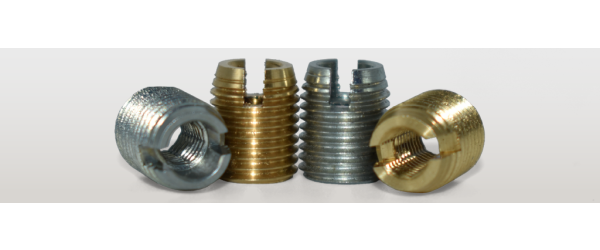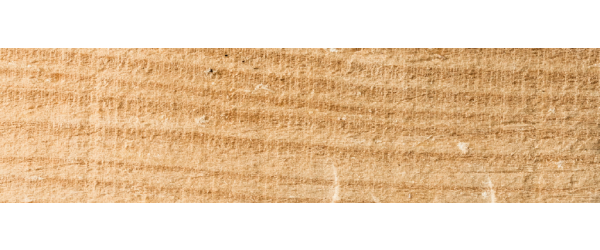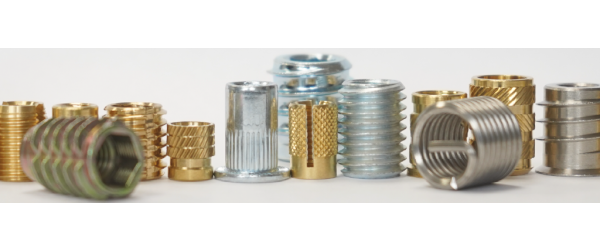However, not all metal inserts are created equal. To further enhance their performance, many manufacturers opt for electroplating — a surface finishing process that involves coating the insert with a thin layer of another metal. Common plating options include nickel on brass inserts and zinc on steel inserts. But why plate at all? And how does it add value to your components?
Let’s take a closer look at electroplating and highlight the unique characteristics of some common plating finishes.
What is Electroplating?
Electroplating is a finishing process where an electric current is used to deposit a thin, uniform layer of metal onto the surface of another metal. In the case of threaded inserts, this coating can improve appearance, durability, and corrosion resistance, among other factors.
This process is particularly useful for manufacturers working with brass or steel inserts who want to tailor the surface characteristics for specific environments or performance requirements.
Why Consider Electroplating Threaded Inserts?
Electroplating is not just about aesthetics - it provides real, functional improvements to threaded inserts, such as:
- Corrosion Resistance: The most common reason to plate inserts is to protect against rust, oxidation, and chemical exposure. This is especially critical in automotive, aerospace, marine, and outdoor equipment applications.
- Improved Wear Resistance: Plated surfaces are often harder and more durable, reducing thread wear over time.
- Electrical Conductivity or Insulation: Certain plating materials like nickel can enhance conductivity, while others like zinc offer mild insulation properties.
- Enhanced Lubricity: A plated insert can provide smoother thread engagement, reducing the chance of thread galling or seizing.
- Aesthetic Appeal: Plating can give parts a clean, uniform, professional appearance, which is valuable in consumer-facing products.
- Compatibility with Harsh Environments: Some plating materials offer enhanced resistance to salt spray, humidity, and high temperatures.
Common Electroplating Options
Nickel Plating
Nickel plating is a smart investment when your application demands durability, chemical resistance, and a professional appearance. Used in a variety of applications including medical devices, consumer electronics, automotive interiors, and aerospace components.
Advantages:
- Superior Corrosion Resistance: Nickel forms a tough, passive oxide layer that protects the underlying metal from corrosion, oxidation, and chemical attack.
- Improved Surface Hardness: Nickel is harder than brass, which means a nickel-plated brass insert can better resist wear, thread damage, and deformation over time — critical in high-usage or load-bearing applications.
- Enhanced Aesthetics: Provides a bright, silvery finish that resists tarnishing and discoloration.
- Smooth Finish for Better Thread Engagement: Reduces the chance of galling or binding during installation.
- Good Electrical Conductivity: In electronic applications, nickel can serve as a conductive layer, allowing it to act as a reliable electrical pathway while also resisting corrosion.
Nickel Plating on Brass Inserts
Nickel plating is commonly used on brass threaded inserts. Brass is already corrosion-resistant, but nickel plating adds an extra layer of durability, hardness, and aesthetic appeal. Compared to using more expensive solid materials like stainless steel, nickel-plated brass offers a cost-effective solution with similar durability and aesthetic appeal.
Zinc Nickel Plating
Zinc nickel plating is an advanced surface treatment that combines zinc and nickel to create a highly durable and corrosion-resistant coating. It offers superior protection compared to standard zinc plating, especially in harsh environments.
Advantages:
- Exceptional Corrosion Resistance: Proven results in salt spray tests, making it the ideal choice in coastal, chemical, or high-humidity conditions.
- High Wear Resistance: Harder surface reduces thread wear and deformation from repeated use or vibration.
- Strong Adhesion to Steel: Bonds well to steel inserts, reducing risk of flaking or peeling.
- Heat Resistant: Performs well in elevated temperatures without degrading.
- RoHS Compliant: Environmentally friendly and suitable for regulated industries.
Zinc Nickel Plating on Steel Inserts
Zinc nickel plating is ideal for steel threaded inserts used in automotive, aerospace, and industrial equipment, where high strength and extreme corrosion protection are required.
Bright Zinc Plating
Bright Zinc Plating, also referred to as BZP, is a widely used electroplating process that applies a thin layer of zinc to steel inserts. It’s the most cost-effective solution where corrosion resistance is needed but cost is a concern. BZP is typically used on steel threaded inserts in indoor furniture, electrical enclosures, general engineering, and non-corrosive industrial environments.
Advantages:
- Corrosion Protection: Offers moderate resistance in indoor and dry environments.
- Improved Appearance: Provides a bright, uniform silver finish.
- Low Cost: Economical option for high-volume production.
- Improved Thread Lubricity: Assists with smoother installation and removal.
- Options for post-treatment processes: Zinc plating allows for post-treatment processes like passivation or chromate coating, which further enhance protection and visual appearance.
Yellow Zinc Plating
Yellow Zinc Plating, also referred to as YZP, is a type of zinc electroplating enhanced with a yellow-chromate passivation layer, giving it a gold or iridescent finish. It offers improved corrosion resistance over standard zinc and is widely used for steel components in automotive, construction, and machinery assemblies.
Advantages:
- Enhanced Corrosion Resistance: Better protection compared to BZP finish, especially in humid or corrosive environments.
- Distinctive Appearance: Easy part identification with a gold/yellow hue.
- Good Lubricity: Aids in smoother thread engagement and assembly.
- Cost-Effective: Affordable protective finish for mass production.
How to Decide if and which Plating is Right for Your Inserts
Not every application requires plating, but here are some situations where it should be seriously considered:
- The inserts will be exposed to moisture, chemicals, or salt spray.
- Your design requires a more visually refined finish.
- You need better thread performance over multiple assembly cycles.
- The insert must conduct or resist electricity.
- You want to extend the lifespan of the part in harsh environments.
When selecting the right plating option, consider the strengths of each:
- Nickel Plating excels in aesthetics and wear resistance, making it great for high-end or visible applications.
- Zinc Nickel Plating provides advanced corrosion resistance for harsh environments.
- BZP is cost-effective but offers only basic corrosion protection.
- YZP offers better corrosion resistance than standard zinc and is visually distinctive.
Plating may add a small upfront cost, but the extended product life, improved reliability, and enhanced appearance often provide a strong return on investment.
Final Thoughts
Electroplating metal threaded inserts is a simple but powerful way to elevate the performance, longevity, and appearance of your products. Whether you're looking to nickel-plate brass for high-end electronic components or zinc-plate steel for rugged industrial use, the benefits of electroplating are clear: better durability, corrosion protection, and functionality.
Looking to integrate plated inserts into your next project? Or you’d like to discuss other finishing options such as Chemical Blacking? Reach out to our team for expert guidance and tailored recommendations to ensure your assemblies stand the test of time.



